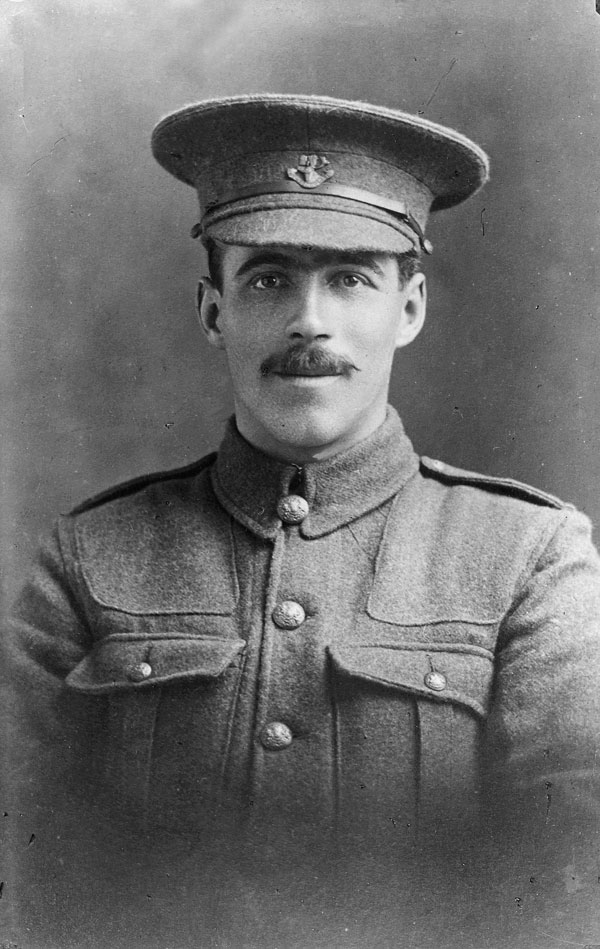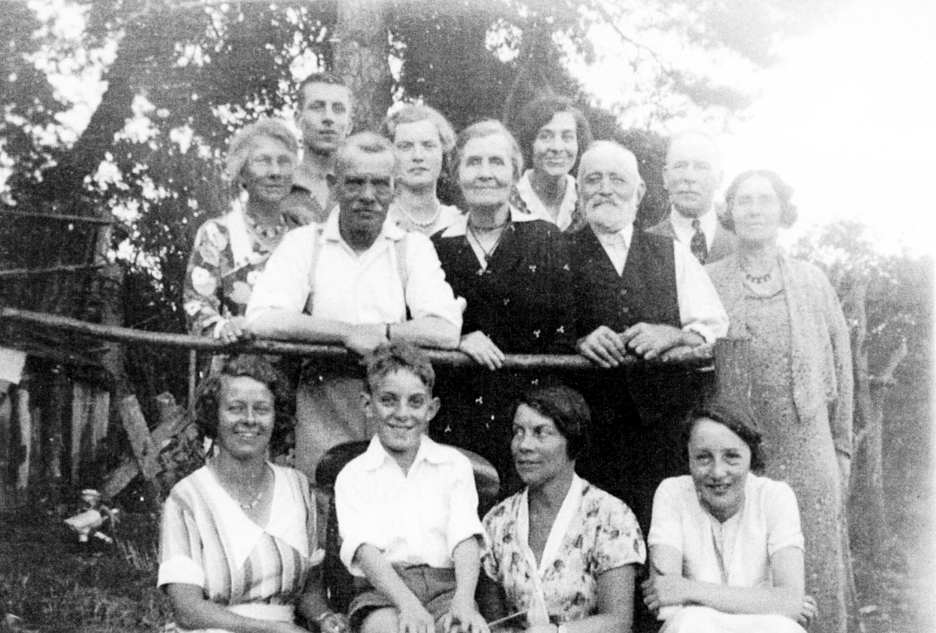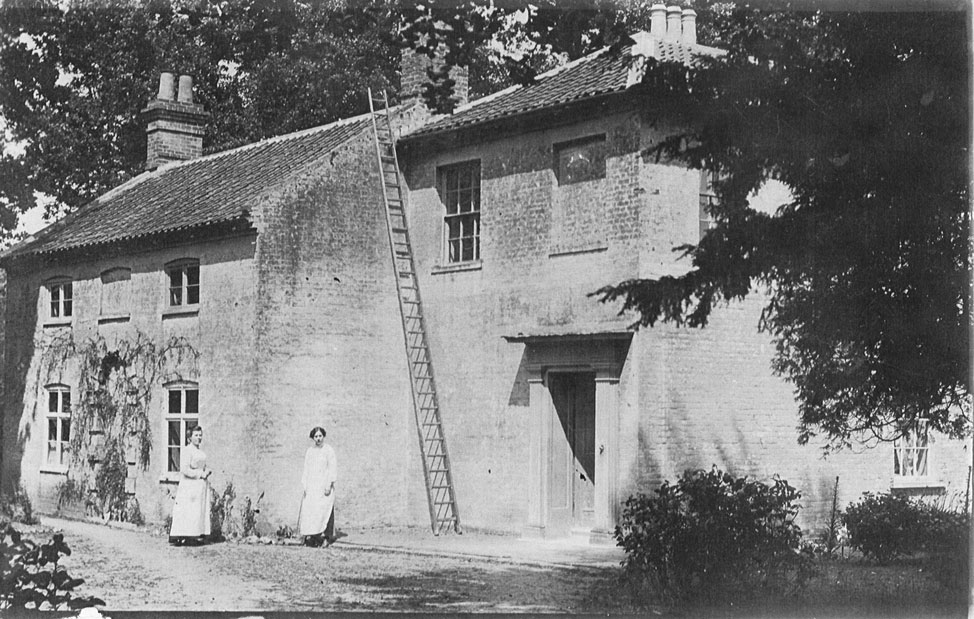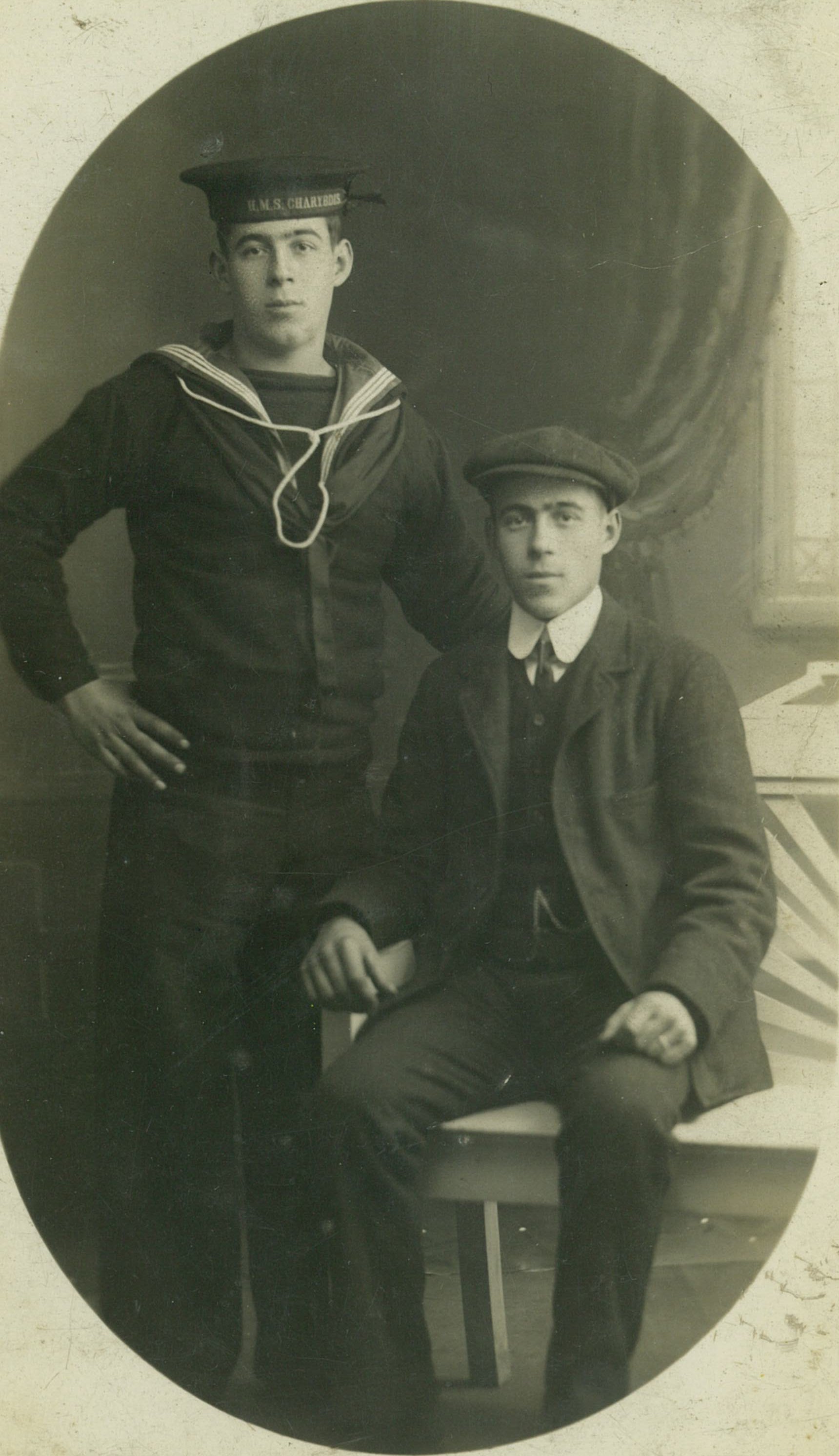Lance Corporal WALTER ERNEST ALEXANDER
1st Battalion, The Newfoundland Regiment
Who died aged 24 on 5th July 1916
Buried in Beauval Community Cemetery, Somme

Family Background:
Walter was the son of Robert and Annie Alexander who, in 1901 and 1911, at the time of the Census, are recorded as living at Veranda Cottage in Bergh Apton (on the lane going North from the junction between The Street, Threadneedle Street and Cooke’s Road. Walter and his twin brother Harry were the elder two of Robert and Annie’s three children. Their sister Eva (or Edith as on the 1901 Census) was three years the twins’ junior.
Robert worked as an engineman (a description of those times for a tractor driver) for Lord Canterbury’s Brooke House estate.

Robert and Annie moved, some time after 1911, to live by The Meres in Brooke but as evidenced by the address Annie gave when she wrote to the Canadian Army on 10th May 1921 the family had returned to Bergh Apton by that time to live out their lives at Holly Hill on Sunnyside.

Military Service:
With the help of Calgary-based researcher Dan Breen we have a comprehensive record of Walter’s military service record.
He enlisted at Boswarlos on the west coast of Newfoundland on 30th April 1915 and sailed for England on SS Calgarian out of St John’s on 19th June.
He was promoted to L/Cpl in November 1915. Promotion so soon after he joined the Army may have recognised that, before he had emigrated to Newfoundland, he had served for a year with 3rd Battalion the Norfolk Regiment (“The Rough and Readies”) that was part of what is now known as the Territorial Army Reserve.
After five months, presumably training, either in England or Scotland, he embarked at Devonport on for Marseilles and arrived there on 3rd April 1916 to join the 1st Battalion at Bonneville shortly before it moved up to the Front to prepare for the Battle of the Somme.
The Newfoundlander Regiment “went over the top” at Beaumont Hamel on the first day of the Battle of the Somme on the morning of 1st July 1916. From the Casualty Report filed in his papers it looks that he survived unscathed that first awful day of the battle in which two hundred and fifty five of his Battalion comrades were killed or mortally wounded. But on 2nd July he received a gunshot wound to the head . He was evacuated to the Casualty Clearing Station at Beauval near Amiens where he died on 5th July. He is buried in that part of Beauval communal cemetery that is set aside for soldiers who died at the Clearing Station.

More Family information
The Canadian Army records that Dan Breen located for us, together with our own research and the remembrances of Walter’s great nephew Bill Fitches, of Oshawa in Ontario, have given us much background to Walter Alexander’s life.
They include correspondence on the matter of a pension Walter’s mother felt she was due following his death. Her letters to the Canadian Army together with those of Dr Gillett, the Brooke general practitioner and of the Revd. Harvey Thursby, Rector of Bergh Apton failed to persuade the Army of her case, and it failed.
They include, too, the evidence that, before his troopship sailed for England in June 1915 Walter signed an Allotment by which he gave 60 cents per day from his army pay to Miss Maude Harvey of Boswarlos who, we conclude, was Walter’s sweetheart.
This leading family of the Methodist congregation of Boswarlos developed strong ties through marriage with the Alexanders. Maude’s cousin Margaret May Harvey married Walter’s twin brother Harry in Boswarlos in September 1913; and Maude’s cousin Andrew Harvey, while in the Canadian Army based in England after the war, married Nellie Graveling (from the Norfolk village of Syderstone) in Brooke church in 1919 after which the wedding reception was held at the home of Anna and Robert Alexander in Brooke.
Thus, had Walter survived the war and married Maude, he would have been connected by marriage to three Newfoundland Harveys; Maude (his wife), Margaret (his sister-in-law) and Andrew (his bother’s brother-in-law).

Twins Harry and Walter took quite different routes to go to Newfoundland (that was then a Crown Colony and not part of Canada).
Harry’s Royal Navy records show that he enlisted in 1896 as a Boy Sailor at HMS Ganges (the training base at Shotley Point in Suffolk). In 1911, while his ship HMS Brilliant was in St Johns Newfoundlkand taking on supplies of coal, he jumped ship. This may account for Harry not having volunteered for military service in WW1 as that would have risked him being revealed as a Royal Navy deserter.
Walter arrived in St Johns as a passenger on SS Mongolian via Halifax Nova Scotia having sailed from Liverpool on 22nd April 1909. Perhaps he had established himself in Newfoundland in the two years before Harry’s ship arrived to take on coal and life on the island with his brother seemed more attractive to Harry than to continue serving in the Royakl Navy. We shall probably never know the true reason why a sailor who had, until then, a good conduct record would have deserted.
The brothers settled in Boswaros (also known as Port aux Port) a remote township on the west cost where Bowaters had established a timber mill and that was where Walter found work as a Fireman until he joined the army in 1915.
